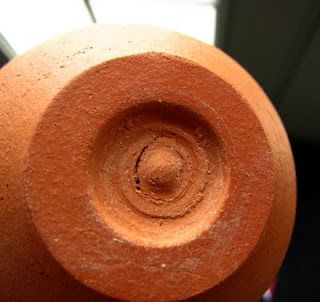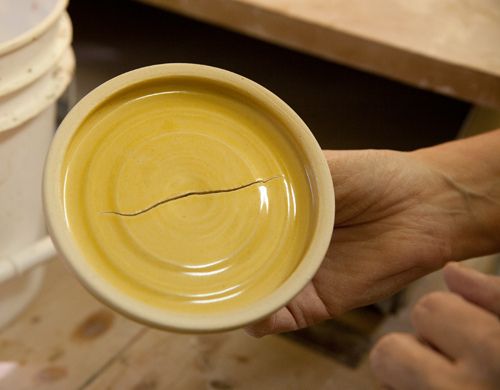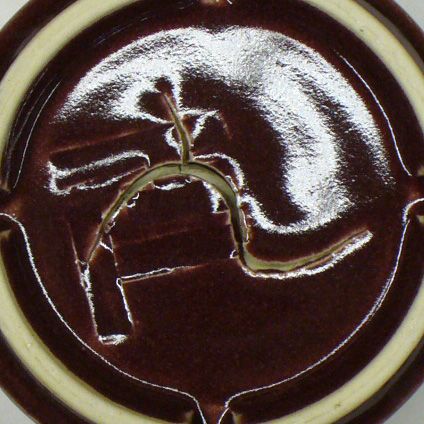It's more difficult than it looks: S-Cracks
Standard clay (the type you fire in kilns) is somewhat tempermental because clay has "memory," as in, it is made up of platelets that settle into patterns depending on how the clay, and they, are worked. Some clays are more sensitive than others. This clay memory can be both good and bad depending on how you work the material. The idea is to make sure that all the platelets are even and formed in a way that are harmonious onto itself. If the platelets are uneven, not compressed, or going all in the same directions, you will tend to get cracks, warping and breaking.
Today, I wanted to show an example of the "S-crack" which happens when the bottom of a piece (be it a bowl, plate or what-have-you) is not compressed well enough when it is being thrown. Because of the centrifical force of the wheel, the platelets are being pushed all in the same direction. While throwing, the potter will not see any issues with the piece until it dries and sometimes, only when it fires will the cracks appear.

Example of a small S-Crack is here on this bowl from Dirt Kicker Potter.
The best way to avoid these cracks is when you are throwing your piece either run your thumb or a wet sponge on the bottom of inside of your piece. Run from the center to the wall and back again, compressing down several times, smoothing the inside floor of the piece.

Another example of a, S-Crack on a plate, this one going all the way through the piece. From DIYDELYRAY.com.
It's always a good idea to make sure all your walls are fully compressed and smooth before you cut off the wheel and trim. This should help avoid most S-Cracks and general simple cracking in general.

Another sample S-Crack from digitalfire.com.
Labels: ceramics, clay fault, s-crack, stoneware, throwing, troubleshoot, troubleshooting

